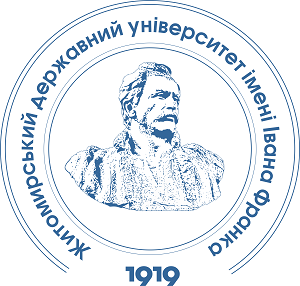GRAY WATER UTILIZATION BY GREEN ROOFS: SYSTEM ANALYSIS AND IMPLEMENTATION PROSPECTS
DOI:
https://doi.org/10.32782/naturaljournal.10.2024.24Keywords:
sustainable development, green roofs, energy efficiency, environmental benefits, gray water, urban landscapingAbstract
In the conditions of global climate changes and the growing shortage of water resources, the issue of efficient use of water in the urban environment is gaining particular relevance. This article presents a comprehensive study of the use of gray water for irrigation of green roofs as an innovative approach to sustainable water use in construction. The work analyzed the physico-chemical and biological characteristics of gray water from various sources (bathrooms, washing machines, kitchens) and their compliance with the requirements for watering vegetation. Modern technologies for the purification and preparation of gray water, including mechanical filtration, biological purification and UV disinfection, were studied. Special attention is paid to the effect of purified gray water on the growth and development of various types of plants used in roof landscaping. On the basis of experimental data and practical experience of implementing similar systems, a technical and economic analysis was carried out, which demonstrates the potential of saving 60–80% of drinking water when using gray water for irrigation of green roofs. The environmental benefits of such an approach are considered, including reducing the burden on urban water supply and drainage systems, reducing energy consumption and reducing the carbon footprint of buildings. The article also presents an analysis of the legal framework for the use of gray water in different countries and provides practical recommendations for the design, installation and operation of water reuse systems for green roofs. The results of the study can be useful for architects, engineers, ecologists and specialists in the field of sustainable construction. The article presents the results of a 12-month experimental study on the use of purified gray water for watering green roofs. The purpose of the study was to determine the effectiveness and safety of using gray water as an alternative source of irrigation for green roof systems. The experiment was carried out on four modular installations, where indicators of plant growth and the state of the substrate were compared when using purified gray water and tap water. Thus, the practical significance of green roofs with gray water utilization systems is comprehensive and has a long-term positive impact on the development of a sustainable urban environment. Their implementation contributes to the formation of more comfortable, ecological and energy-efficient cities.
References
Валерко Р.А., Герасимчук Л.О., Бельмега І.В., Шацило Є.Г. Зелені дахи як напрям наукових досліджень. Державний університет «Житомирська політехніка». Житомир, 2024. [Електронний ресурс] URL: http://agrarian-innovations.izpr.ks.ua/index.php/agrarian/article/view/552 (дата звернення 24.11.2024).
Герасимчук П.О., Валерко Р.А., Весельський О.О. Переваги зелених дахів та їх розрахунок. Аграрні інновації. 2024. № 23. С. 48–57. https://doi.org/10.32848/agrar.innov.2024.23.7.
Рибак О.С. «Зелений дах-біорізноманіття»: технології будівництва, утримання, обслуговування та особливості контролю біотичної складової. Вісник КрНУ імені Михайла Остроградського. 2023. № 5. С. 35–41. https://doi.org/10.32782/1995-0519.2023.5.4.
Рибак О.С., Пацева І.Г. Екологічні основи аналізу впливу «зелених» дахів на міський клімат в урбоценозах. Вісник хмельницького національного університету. 2023. № 5 (2). С. 103–107. https://doi.org/10.31891/2307-5732-2023-325-5-103-107.
Рибак О.С., Пацева І.Г. Зелені дахи як елемент децентралізованого управління дощовою водою. Проблеми хімії та сталого розвитку. 2023. № 2. С. 40–46. https://doi.org/10.32782/pcsd-2023-2-6.
Рибак О.С., Пацева І.Г. Міське огородництво на даху – екологічне подолання продовольчої кризи в урбанізованому середовищі. Аграрні інновації. 2024. № 24. С. 135–140. https://doi.org/10.32848/agrar.innov.2024.24.19.
Amin M., Dorra E., Hosny O. Optimization of Urban Water Consumption in Residential Buildings. Sustainability. 2023. Vol. 15 (10). P. 7952. https://doi.org/10.3390/su15107952.
Azabache Y., Rojas K., Irigoín S., Rodriguez R., Quispe B. Proposal for a hydraulic system for reusing gray water that would reduce drinking water consumption in family homes. Manglar. 2020. https://doi.org/10.17268/manglar.2020.026.
Chougule S., Swaminathan A., Bamane P. Laboratory Testing Pros and Cons Over Natural Grey Water and Synthetic Grey Water Testing. International Journal for Research in Applied Science and Engineering Technology. 2023. Vol. 11(5). P. 1404–1411. https://doi.org/10.22214/ijraset.2023.50119.
Hajlaoui H., Akrimi R., Guesmi A., Hachicha M. Assessing the Reliability of Treated Grey Water Irrigation on Soil and Tomatoes (Solanum lycopersicum L.). Horticulturae. 2022. Vol. 8 (10). P. 981. https://doi.org/10.3390/horticulturae8100981.
McCann H., Pisano G., Beltrachini L. Variation in Reported Human Head Tissue Electrical Conductivity Values. Brain Topography. 2019. Vol. 32. P. 825–858. https://doi.org/10.1007/s10548-019-00710-2.
Noutsopoulos C., Andreadakis A., Kouris N. Greywater characterization and loadings – Physicochemical treatment to promote onsite reuse. Journal of Environmental Management. 2017. Vol. 203 (2). P. 655–663. https://doi.org/10.1016/j.jenvman.2016.06.056.
Prajapati B., Jensen M., Jørgensen N., Petersen N. Grey water treatment in stacked multi-layer reactors with passive aeration and particle trapping. Water research. 2019. Vol. 161. P. 181–190. https://doi.org/10.1016/J.WATRES.2019.05.096.
Woltersdorf L., Zimmermann M., Deffner J., Gerlach M., Liehr S. Benefits of an integrated water and nutrient reuse system for urban areas in semi-arid developing countries. Resources Conservation and Recycling. 2018. Vol. 128. P. 382–393. https://doi.org/10.1016/J.RESCONREC.2016.11.019.
Yoonus H., Al‐Ghamdi S. Environmental performance of building integrated grey water reuse systems based on Life-Cycle Assessment: A systematic and bibliographic analysis. The Science of the total environment. 2020. Vol. 712. P. 136535. https://doi.org/10.1016/j.scitotenv.2020.136535.






